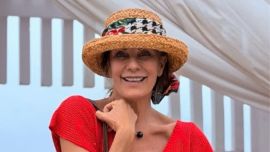As always, this column seeks linkage between current news and an ever recurrent past, but this time the memory trigger does not spring from the main headlines – not the European swing of President Alberto Fernández impelled by this month’s Paris Club deadline, nor the pandemic superpowers drive now sent to Congress, but the death last weekend of former Santa Fe socialist governor Miguel Lifschitz, yet another Covid-19 victim.
This brought back to mind my beginnings in Argentine political analysis during the democratic dawn of 1983, because with Britain’s Labour Party so dominant throughout my lifetime in my native Liverpool (not for nothing is the kit of the football team bearing that city’s name all red), I needed to identify its Argentine equivalent in order to have a touchstone for everything else. The obvious starting-point was Peronism (almost the only element in Argentine politics of which I had any idea upon arrival), especially given the common roots in trade unionism, but this was soon discarded – any doctrinal consistency wholly subordinated to populist electioneering and even the trade unionist connection the wrong way round with the so-called “social conquests” being gifted from above rather than won from below. So this left the question begging – where was socialism in Argentina?
Back in 1983 there were bits and pieces of a fragmented movement – Popular Socialists, Authentic Socialists, Democratic Socialists and United (sic) Socialists, not to mention the Vanguard Socialists and the Socialist Liberation Movement formally forming part of the spectrum but in reality adjuncts of revolutionary and mainstream Peronism and also not counting the various splinters of an equally divided far left – all competing for less than one percent of the vote. No point in entering into any details of this infighting – “bald men fighting for a comb” in the phrase of Jorge Luis Borges – but perhaps the differences back then can be reduced to a basic dilemma facing any social democrat as to which of those two words weighs most, “social” or “democrat.” For the former the foe was clearly the Peronist usurper of the working-class social base, while for the latter it was the dictatorship crushing democracy during a half-century along with its allies and followed by its heirs. From the likes of Américo Ghioldi (an eternal conspirator against the first Peronist governments and even representing the 1976-1983 military dictatorship abroad as ambassador) to Roy Cortina today (born in New York and part of the Cambiemos/Juntos por el Cambio family since 2013), this dilemma has led to socialists openly aligning with dictatorships or centre-right parties.
No point in exploring socialism at national level any further with nothing much to show beyond Hermes Binner as the runner-up in the 2011 presidential elections with less than a third of the 54 percent vote garnered by the recently widowed incumbent Cristina Fernández de Kirchner. The pre-Peronist history of socialism in the first half of the past century has more to boast (including drafting various socially progressive parliamentary bills for Peronism to enact and take the credit) but I was not there to bear witness.
Perhaps this chronic absence of socialism is best explained by where it is present. All politics is local, it is often said, and socialism does have its pockets in Argentina, of which the late Lifschitz represented by far the largest, the province of Santa Fe. The most important of these pockets historically have been that province and the two cities of Rosario and Mar del Plata. It is perhaps significant that these two are the only ones among Argentina’s 10 largest cities which are not national or provincial capitals (which does not prevent the main newspaper in both places from being called La Capital, strangely enough). Both also differ from the other main urban centres in being new cities – whereas all the capitals of Argentina’s original provinces were colonial foundations in the 16th century, Rosario was founded in 1852 and Mar del Plata in 1874. From 1920 onwards Mar del Plata (or General Pueyrredón, as the district is officially known) was governed by socialists for much of the past century with Teodoro Bronzini serving several mayoral terms between 1920 and 1963. When socialism lost steam in Mar del Plata, Rosario and Santa Fe province took over – Rosario had a socialist mayor from 1989 until the last elections while Lifschitz was the last of three socialist governors (following Binner and Antonio Bonfatti) between 2007 and 2019.
But we should not just be looking at cities – the countryside also offers an important clue. Domingo Faustino Sarmiento’s diplomatic mission in the United States (1865-1868) is most famous for giving him the idea of recruiting Mary Graham’s schoolmarms to give education the absolute priority it seems to have lost these days, but his US sojourn also gave him an equally fundamental vision – arriving shortly after the Homestead Act of 1862 granting plots of no more than 65 acres to create a nation of small farmers. Sarmiento sought to implant that system in Argentina instead of the semi-feudal agriculture persisting from colonial times but with little success outside Santa Fe where a wave of European immigrants at that time (often Swiss or North Italian) snapped up the smallholdings on offer and eventually created co-operatives for the necessary economies of scale – a rural base for Santa Fe socialism.
Perhaps the strengths and weaknesses of socialism in Argentina might serve to tell us that immigration (including internal migration) should not be underestimated as a defining political factor. In the half-century between the foundation of the Socialist Party in 1896 and the advent of Peronism in 1945-1946, socialism had a certain force in this city due to an influx of European immigration but with the newcomers predominantly Italian and Spanish, social democratic ideas had to compete with anarchism before the First World War and also Communism after it. Peronism then fed on the migration of a mostly semi-feudal hinterland – had more provinces replicated North American patterns of rural settlement like Santa Fe, perhaps this country’s political history might have been different.
Anyway at least President Fernández calls himself a social democrat and is evidently cosy with like-minded European leaders but it’s lonely at the top.



















Comments